80km London to Epsom
Ashtead Common
Ride Overview
The perfect antidote to the choked roads of South West London, this gravel ride packs in everything other than mountains - there are woods aplenty, heaths, a little singletrack, and rather than mountains, we have the majestic Epsom Downs. You have the opportunity to press hard along the Epsom Racecourse, if anything to see just how hard those horses have to push themselves in order to win their fame and glory at the Epsom Derby. You could of course, ride slower and just enjoy the wonderful views. The return leg is through yet another of Henry VIII’s many hunting parks which encircled London, Nonsuch Park. Around Ewell, there are a couple of short sections of footpaths - each no more than 100m in length. Please walk along these so as not to further antagonise the already vociferous anti-cycling lobby of Epsom and Ewell. The finish is a splendid wood-river path beside the Hogsmill, made famous by John Everett Millais’s painting of Ophelia. So, if you’re looking for a lovely ride out of South-West London avoiding traffic-clogged roads, this route along the empty tracks and trails could be just the thing.
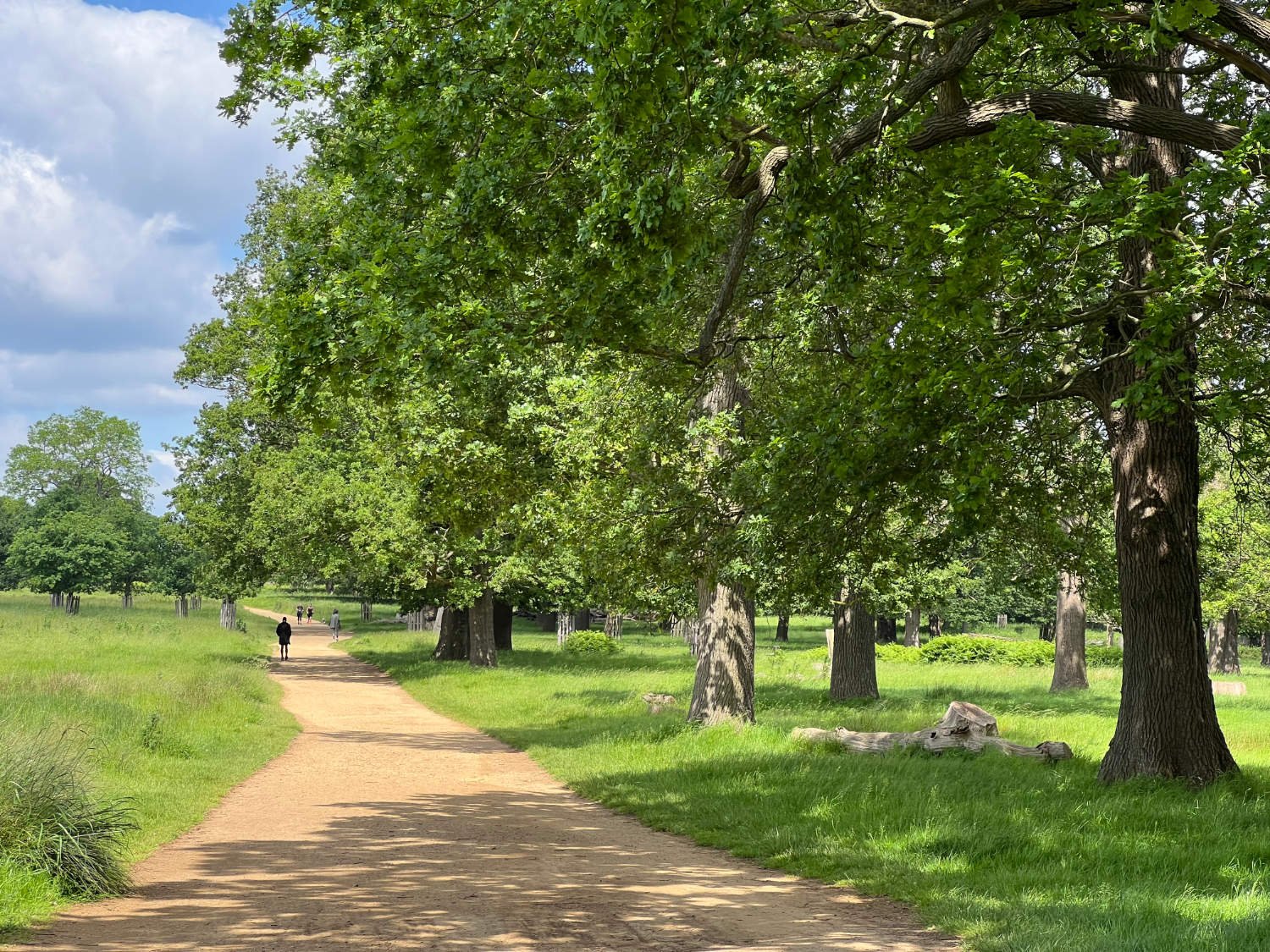
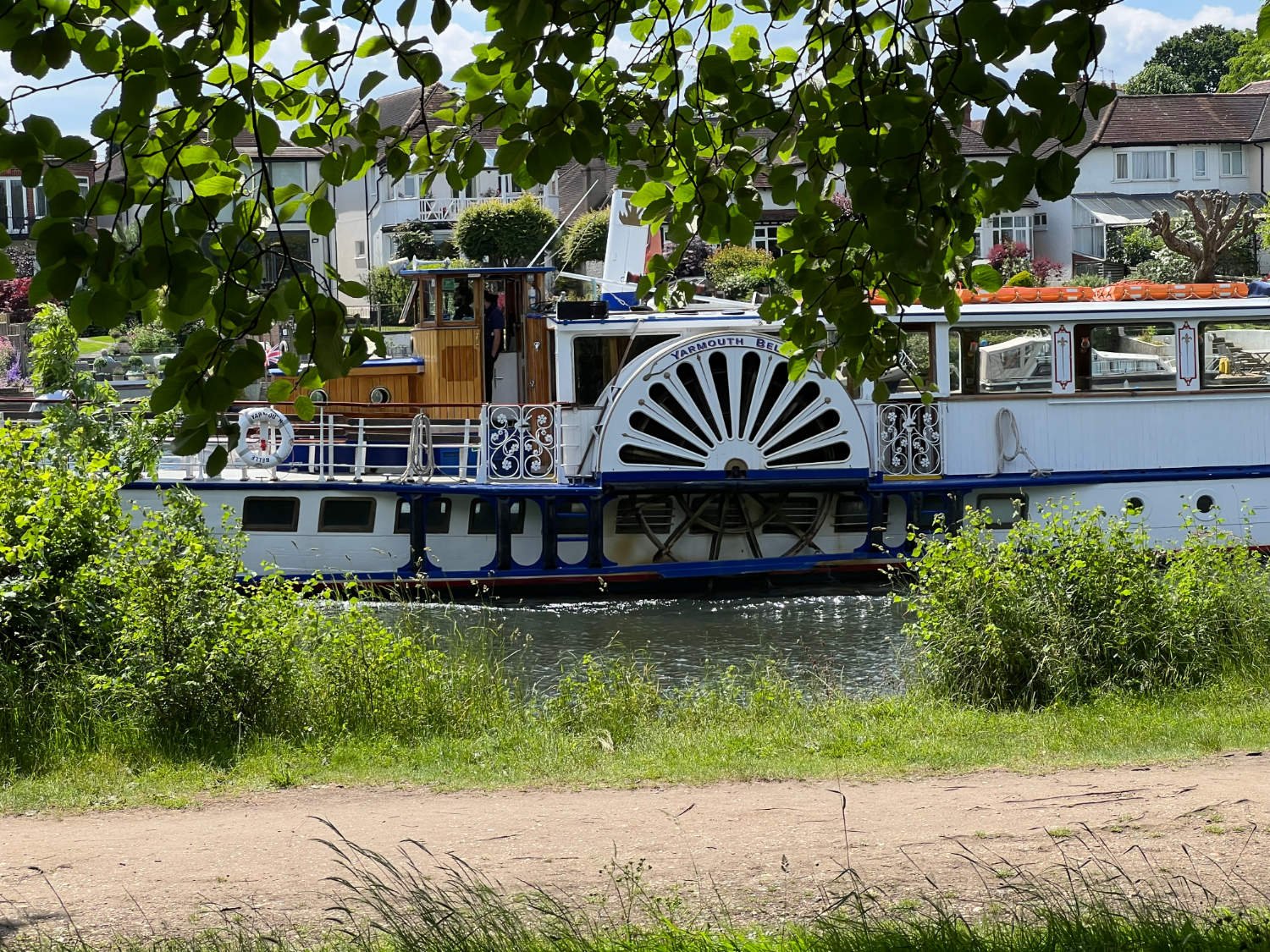

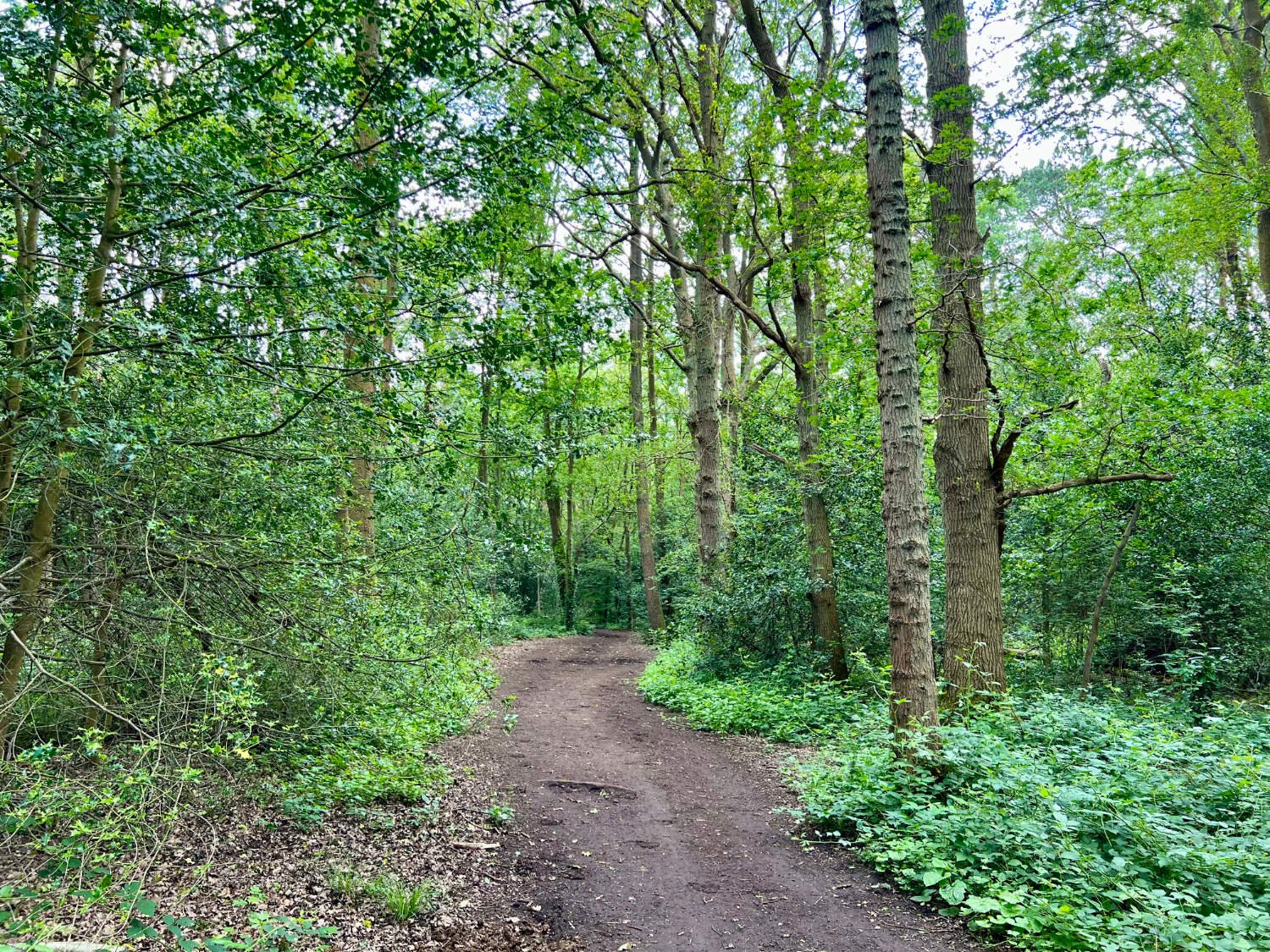

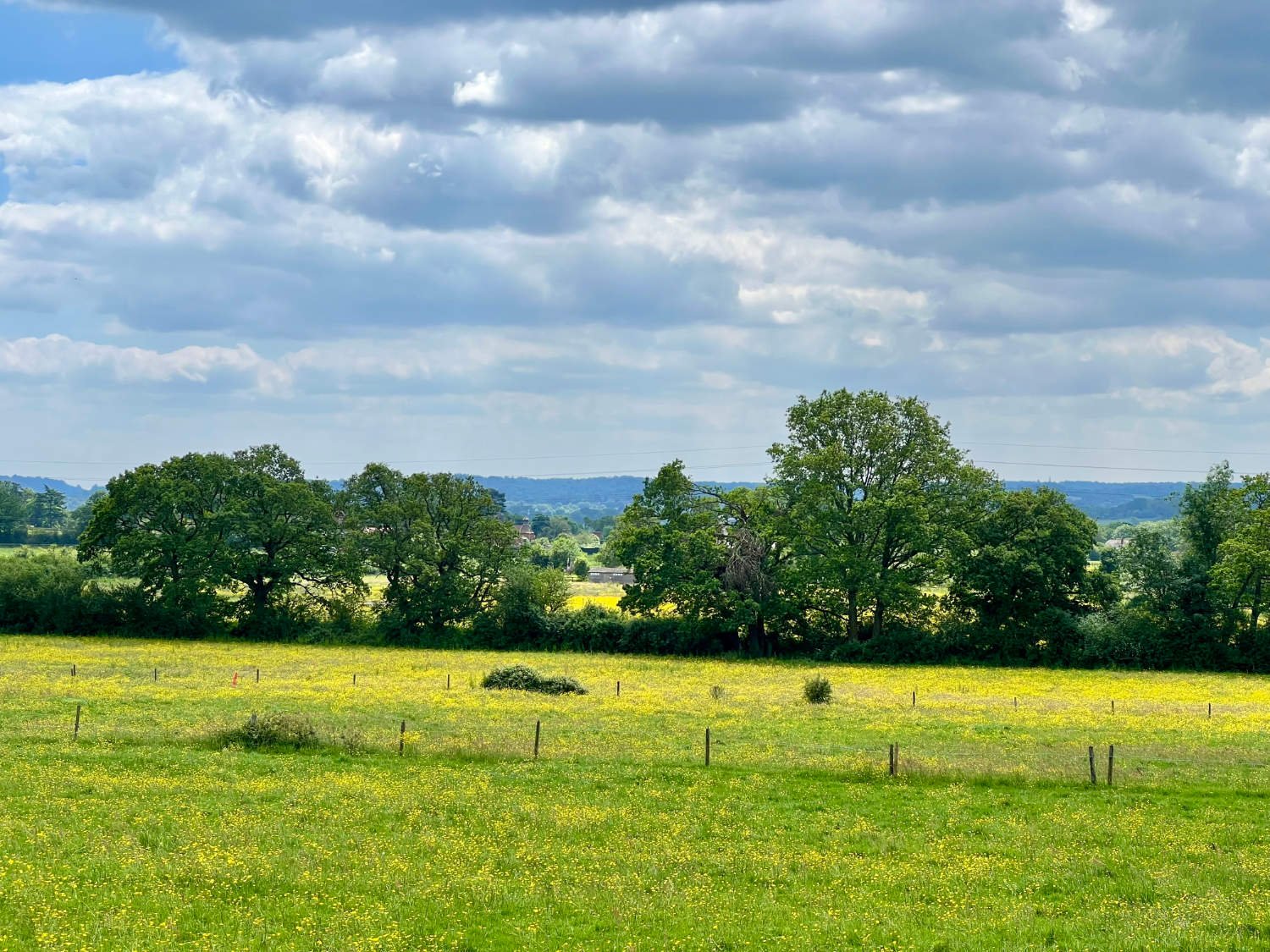


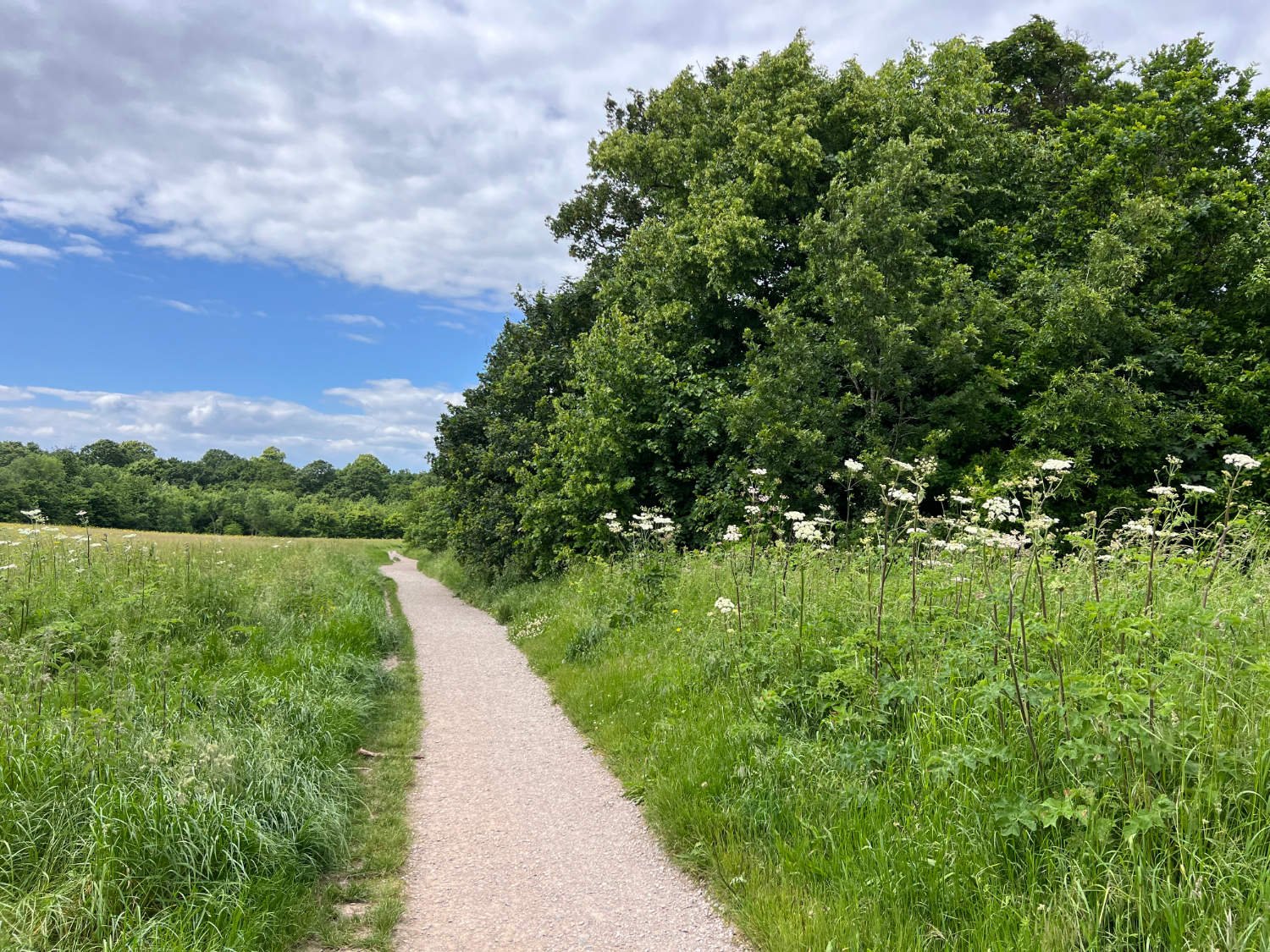
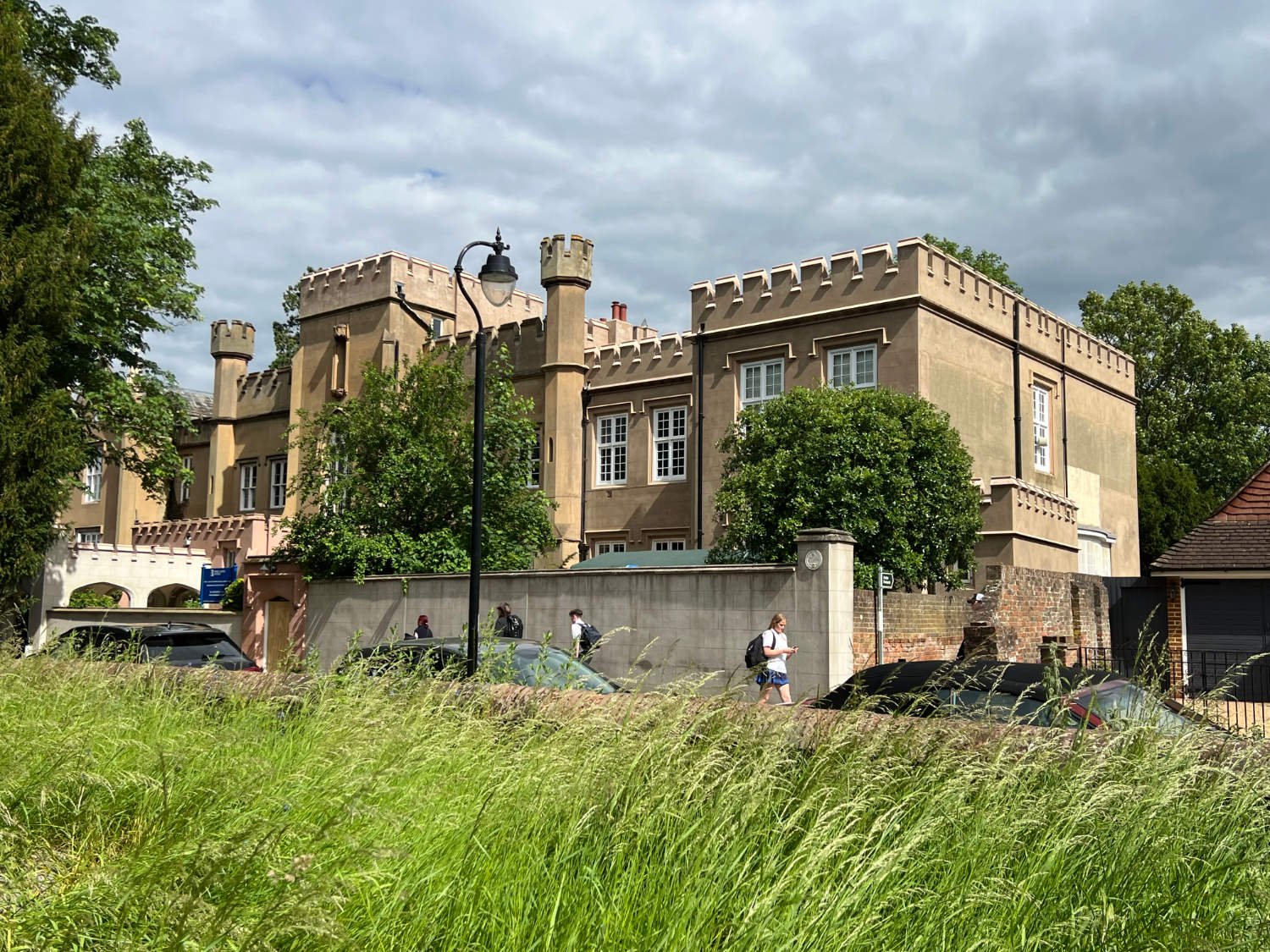

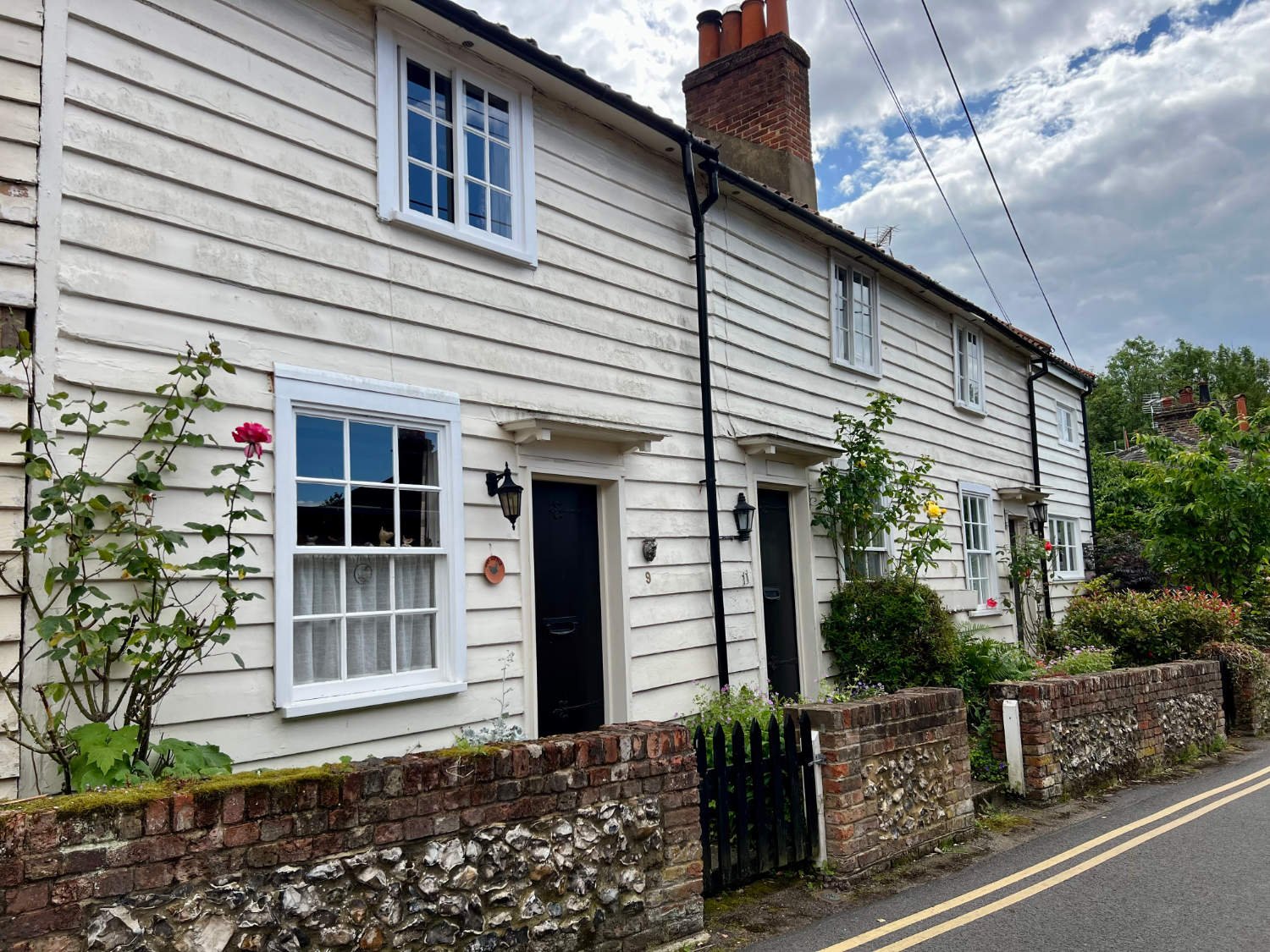
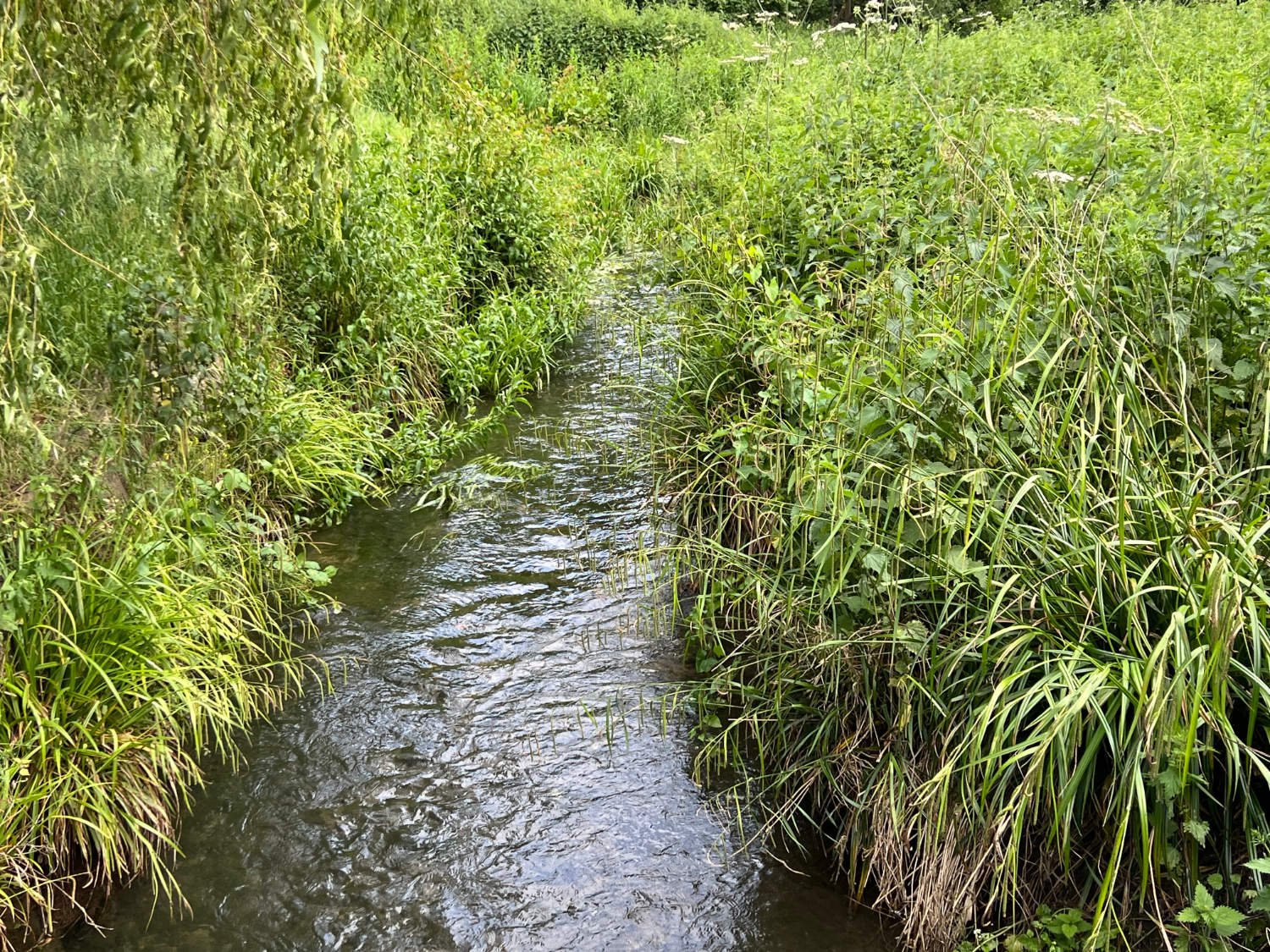



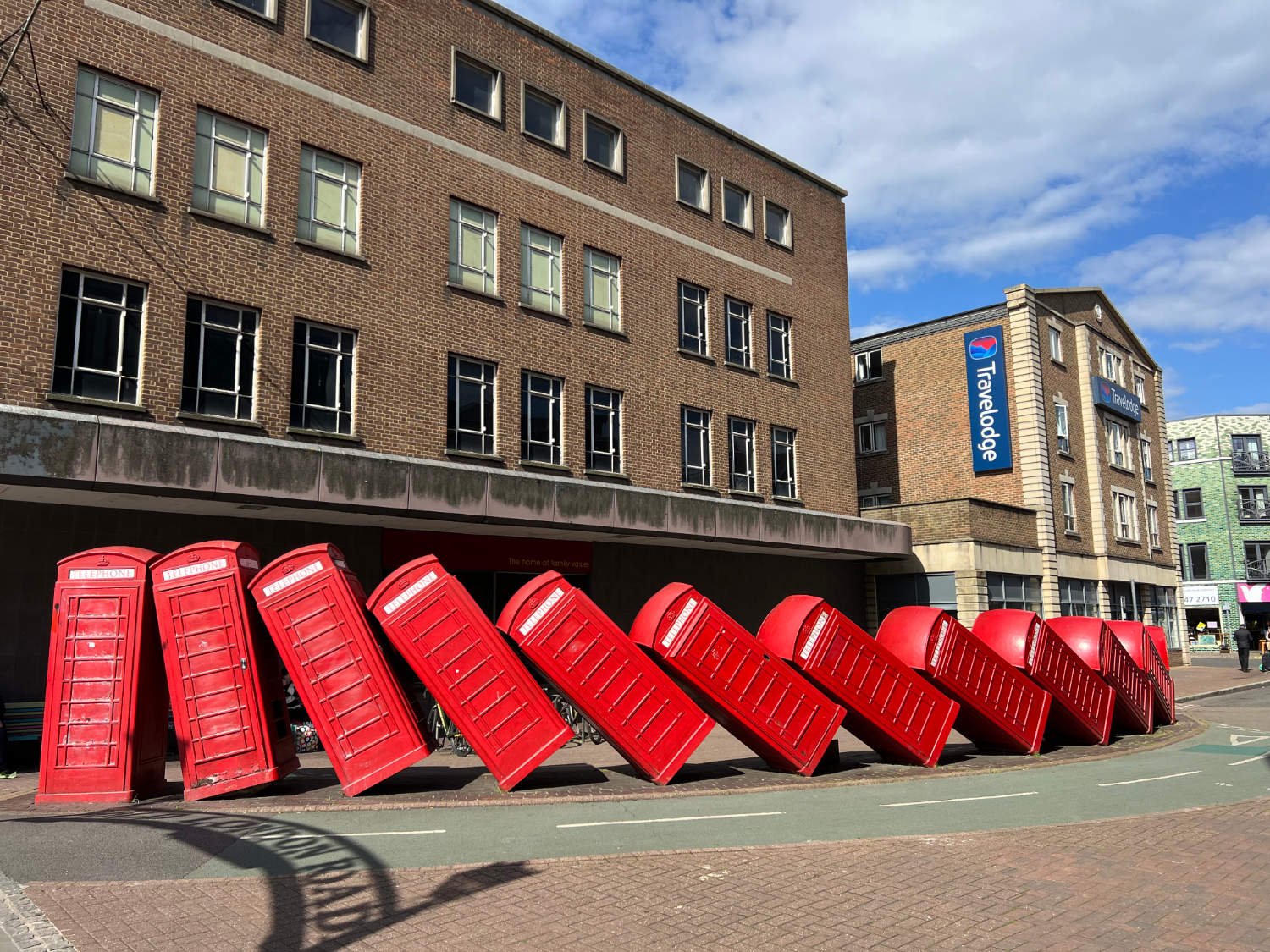


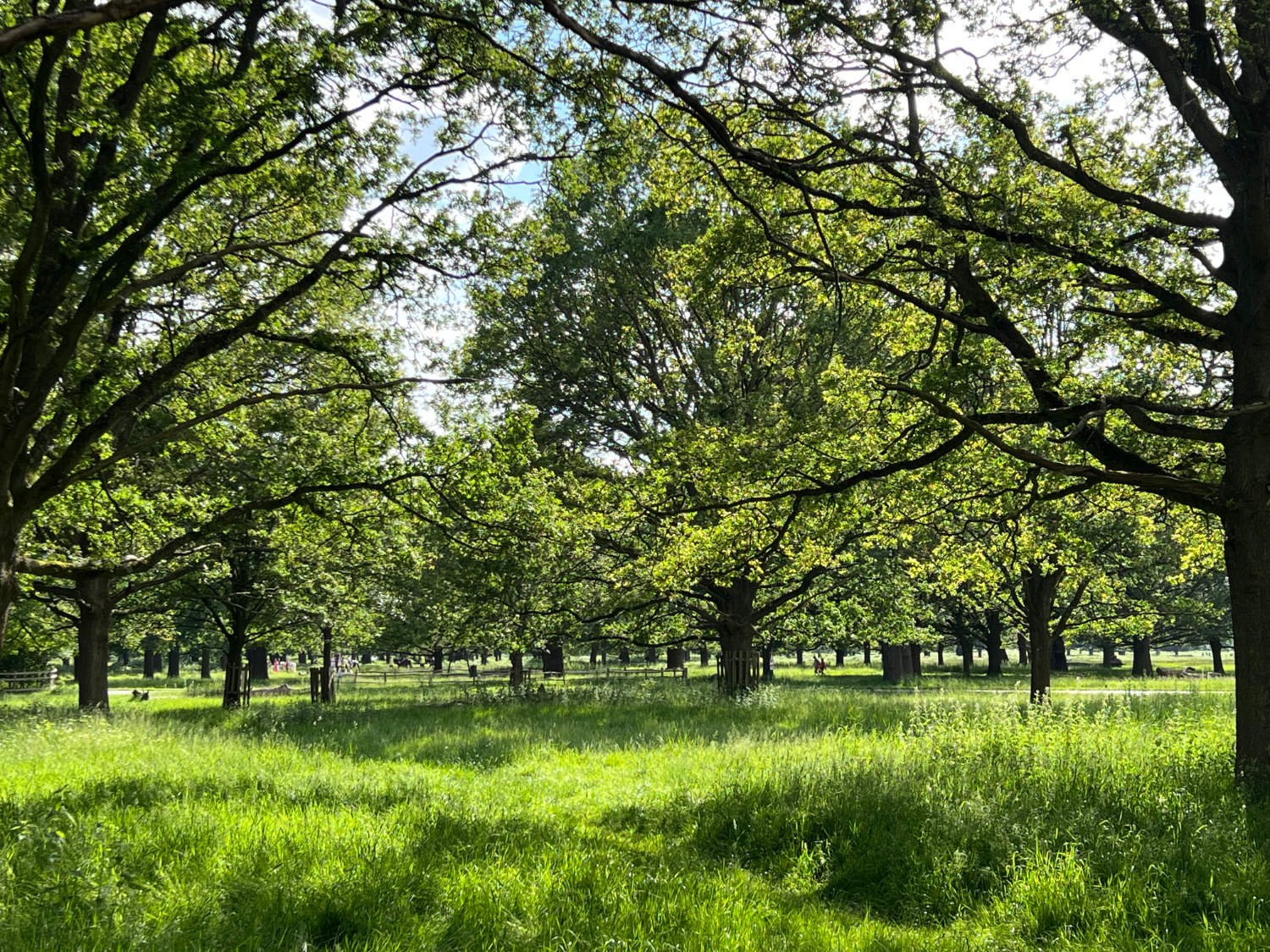
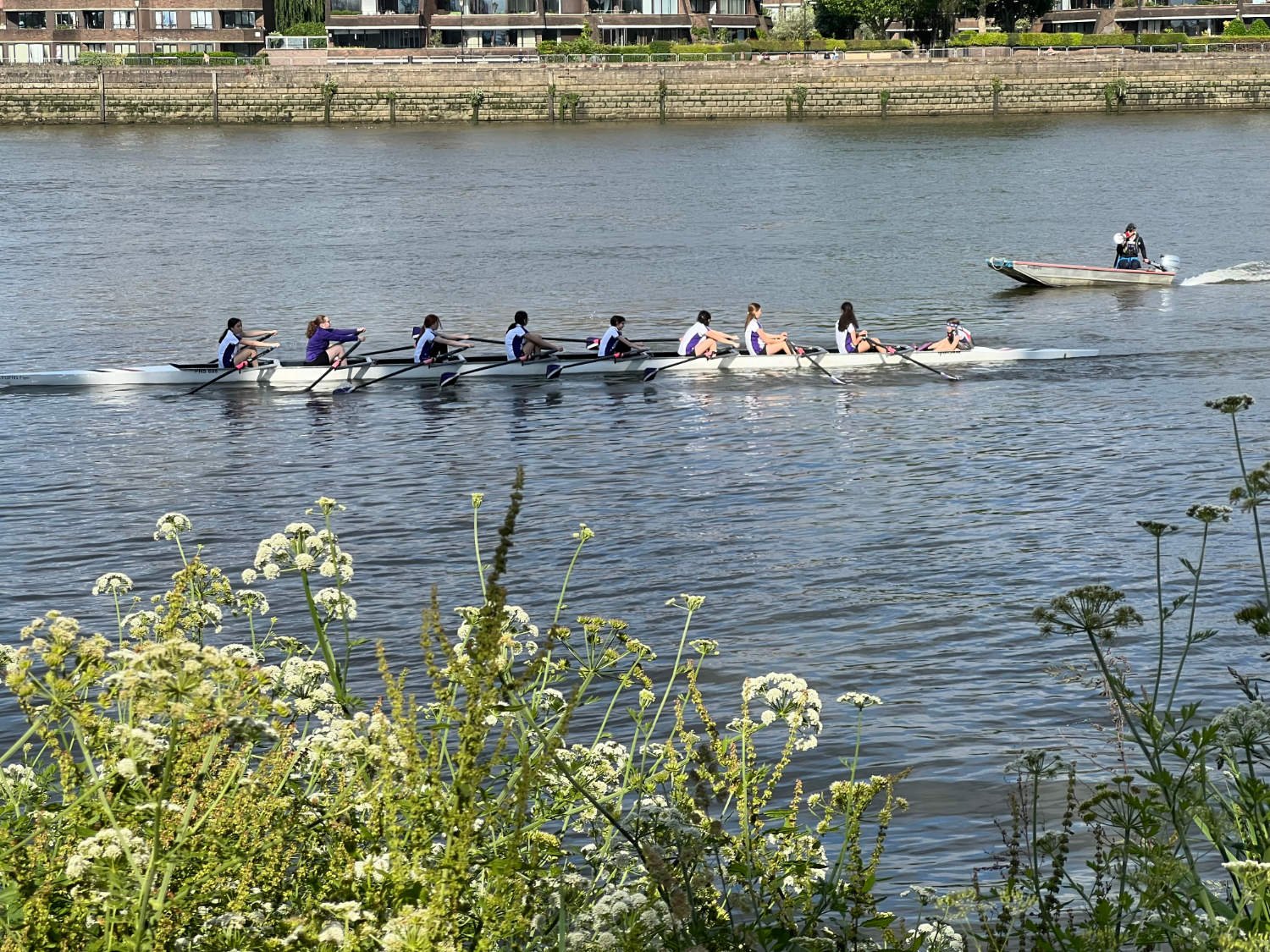

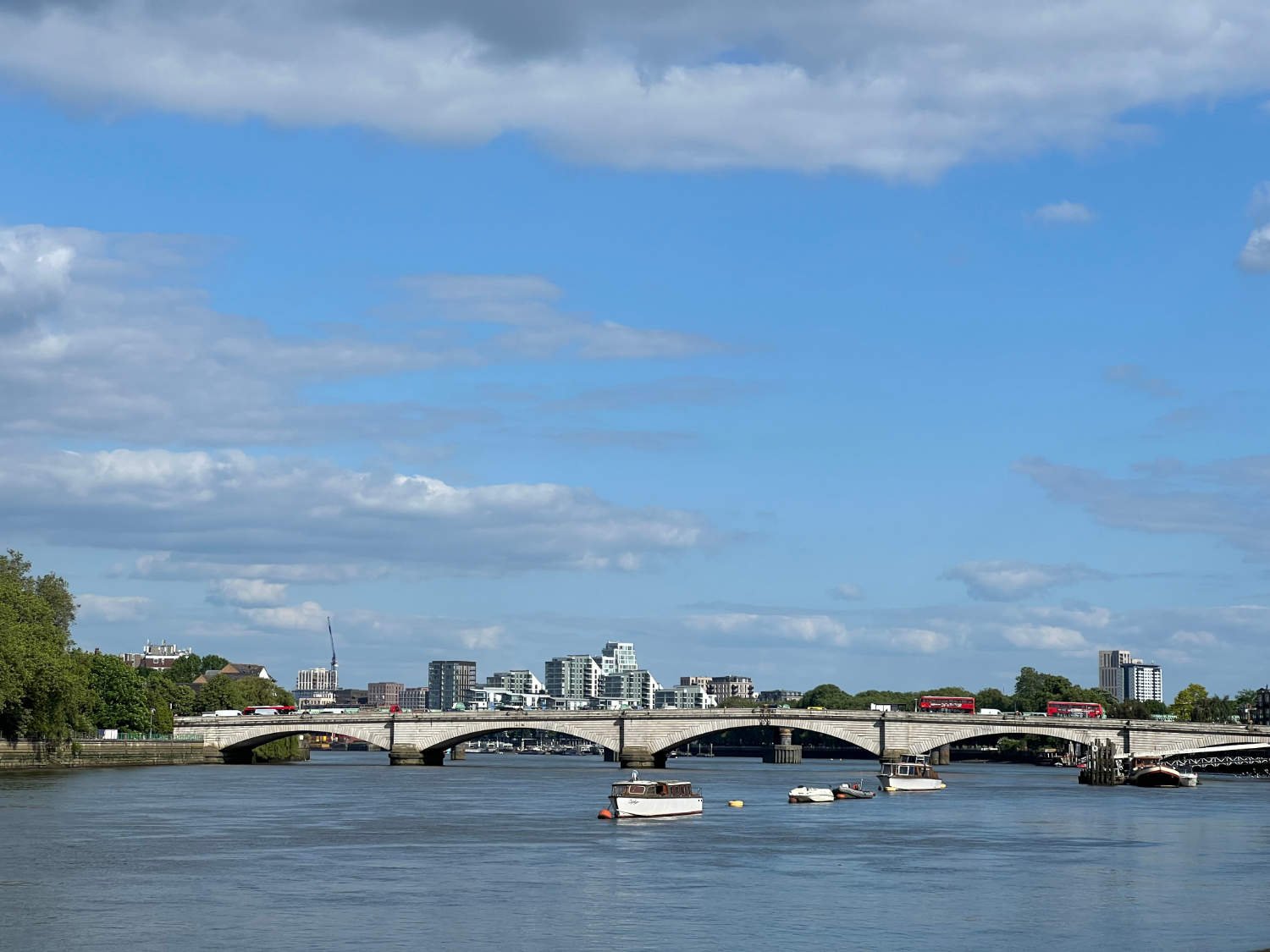
Ride practicalities
A plea; This route, more than most on the website, passes through some of the most densely populated parts of Europe, even though it might not seem that way as you ride on what can often appear to be un-peopled paths. You should expect to encounter others enjoying their walks, runs, dog-walking or riding their horses. Much of the land that you’ll be riding across is managed by private groups who are not kindly disposed to cyclists. Please do your bit by riding slowly and courteously when sharing the path with others. A ring of a bell, and a polite ‘hello’, ‘thanks’ etc. goes a long way to maintaining harmony when people step aside to let you pass. That said, it’s a glorious route, so don’t be put off by the prospect of others sharing the pleasures of being out of the city.
START/FINISH: Putney Bridge DISTANCE: 80km TOTAL ASCENT:621m TERRAIN AND SURFACES: Quiet suburban roads, dedicated bike lanes and gravel paths. In winter some of the paths may be muddy RECOMMENDED CAFÈS/PUBS/: Ashtead commons; KT9 Ewell, Nonsuch Stables Café NEARBY MAINLINE TRAIN SERVICES: Esher, Epsom, Kingston, Putney PLACES TO VISIT; Epsom Wells LINKS TO OTHER RIDES: The Arcadian Thames, London to Windsor, The Royal Parks, NCN 22, London to Brighton
Ride Notes
No time is wasted from start at Putney Bridge as you immediately join a gravel path beside the Thames which takes you past the London Wetland Centre and into Richmond Park. Here you join the Tamsin Trail around the edge of the former royal forest. It’s luscious riding on a firm and smooth gravel path to Ham Gate, where after a short cycle-lane interlude through Kingston, you re-join the Thames gravel path to Hampton Court.
Tamsin Trail, Richmond Park
By-passing Esher and that dreadful Portsmouth Road which is an endless battleground between Sunday cyclists and reckless drivers, you ride across Littleworth Common, a heathland of birch and pine and oak. The gravel track is well used and you should expect the usual mix of horses, cyclists, dogs and people. That said, unless you pick the peak times of a weekend, you’re more likely to have the woodland to yourself.
Back in the day, all the commons that you are riding over were one big heathland, but nowadays they are separated by sections of housing, some it must be said, with interesting inter-war architecture. Once across the unbelievably busy Copsem Lane - in my early lifetime this was a quiet country road - you’re onto Esher Common.
Esher Common
You’ll probably not be aware of it as you ride up the sandy banks and along wonderful tracks lined with oak, beech, silver birch, and Scots Pine, that this is one of the most diverse habitats for fungi in the world. In 2017, over 3400 species of fungi were recorded, some new to science.
Once over A3 on an accessible bridge, the superb gravel riding takes you onto Oxshott Common, another heathland. Woodland here is very much a twentieth century phenomenon as the land was previously used for cattle grazing. Once that died out, trees took over. However, as with many ‘Commons’, locals have specific rights, which on Oxshott Common includes the provision for the collection of firewood, ‘subject not to misuse’.
You’ll be less interested in collecting firewood than pressing on, which once you’ve ridden on a narrow gravel path beside fields grazed by horses and in early summer covered in buttercups, you’ll be entering Prince’s Coverts.
Prince’s Covert
Prince's Coverts is named after Prince (later King) Leopold I of Belgium. He had purchased nearby Claremont Park in 1816 and later acquired nearby common land which became his private shooting estate. (The erosion of common land its associated rights for commoners is not just a recent thing.) Following the King’s death, the land was repurchased by the Crown, who continue to own the woods. The riding on the wide gravel path is brilliant. There are a couple of short rises to test the heart, and some joyous flat riding. Be aware that at busy times, dogs will often be nosing around off the leash and are apt to be distracted enough not to notice you. As ever, slow down and and courteously thank the owners for any attempt at controlling their hounds.
The way to the Barn, KT9
Cross the Chessington road and you’re into the next glorious stretch - Ashtead Commons, owned by the City of London. Between 1760 and 1870, roughly seven million acres of England countryside was enclosed; that is ‘ordinary commoners’ were excluded from their centuries old rights of access. So bad was this ‘privatisation’, that the City of London Corporation decided to buy up huge tracts of forest around London so that Londoners could enjoy fresh air and exercise without cost (other than getting there). Access remains open to all. The café, The Barn KT9, just off the path and across a field, makes for a good half way pit-stop.
The route continues with a short diversion to Epsom Wells, one of the earliest Spas in England. The spring, full of minerals, was first discovered in 1618. By the Restoration period, it had according to a Dutch visitor, William Schellinks, become ‘very famous and much visited place, very pleasant…… The water is much drunk for health reasons, having purgative powers…... The practice of the drinking of the water is early in the morning and from then until 8, 9, 10 o’clock. It is drunk on an empty stomach from stoneware mugs holding about one pint. Some drink ten, twelve, even fifteen or sixteen pints in one journey, but everyone as much as he can take. And one must then go for a walk, works extraordinarily excellent, with various funny results. ……Some stay there on doctor’s orders for several weeks continuously in the middle of the summer, drinking daily from this water, and many people take after the drinking some hot meat broth or ale.’ The well, as you will see, is tightly closed, since the Health and Safety Police have deemed it to be ‘unsafe.’ (More likely it is the drinking of 15 or 16 pints which makes it ‘unsafe’).
Epsom Racecourse, home of The Derby
From the Wells, you ride up onto the downs through the delightful Langley Vale. The riding is quite strenuous - it’s uphill - and as the downs level out, please don’t be tempted to ‘put down the gas’. Epsom Downs is still, for all its public access, private land where race horses live and train. They are particularly highly strung animals and cyclists alarm them. Please ride with utmost regard for those skittish four-legged thoroughbreds. It is their race track, not yours.
Nonsuch Park
The views of the downs are superb, and from here, it’s downhill all the way back to London. There are some fabulous paths to ride on, as well as three short footpaths. Please keep the peace and avoid antagonising those who ‘hate’ cyclists (This area has plenty of those) and WALK your bike on the short sections. Without ado, you arrive at Nonsuch Park, where Henry VIII built his most extravagant palace. Nothing remains other than a few stables - where there is a café. Henry VIII wanted the palace to be a celebration of his power and it was built to rival the king of France’s extravagant Chateau di Chambord. However unlike Chambord, Nonsuch had no access to a potable water supply. The palace was barely used after Henry VIII’s death and it was pulled down in 1682 by the Countess of Castlemaine, in order to sell off the building materials which paid off her gambling debts.
The ride along the gravel and earth paths of the Hogsmill is fabulous, although in the depths of winter it can be very muddy. The river inspired John Everett Millais to paint his masterwork, ‘Ophelia’ which hangs in Tate Britain and is regarded as one of the great masterpieces of the Pre-Raphaelite style. Millais spent the summer of 1851 painting the background with close attention to every detail. Returning to his studio, he employed Elizabeth Siddal to lie in a bath heated by lamps underneath. One day, the lamps went out, unnoticed by Millais. Siddal nearly died from the resulting cold and her father had to sue Millais for the doctor’s fees.
Boats, Fulham Palace Football Ground and Putney Bridge
All good things come to an end, and so does the Hogsmill Path. The ride continues into Kingston-upon-Thames and using the superb cycling infrastructure you’re soon back on the Tamsin Trail in Richmond Park. Once through the park, you re-join the path alongside the Thames back to the rowing clubhouses in Putney.
All the details given on this route are given in good faith. However, situations on the ground can change, so if you know of any access issues, closures, or have any thoughts and feedback on the route, please include them in the comments section below.
wheremywheelsgo.uk is a Feedspot UK Cycling top 20 website








